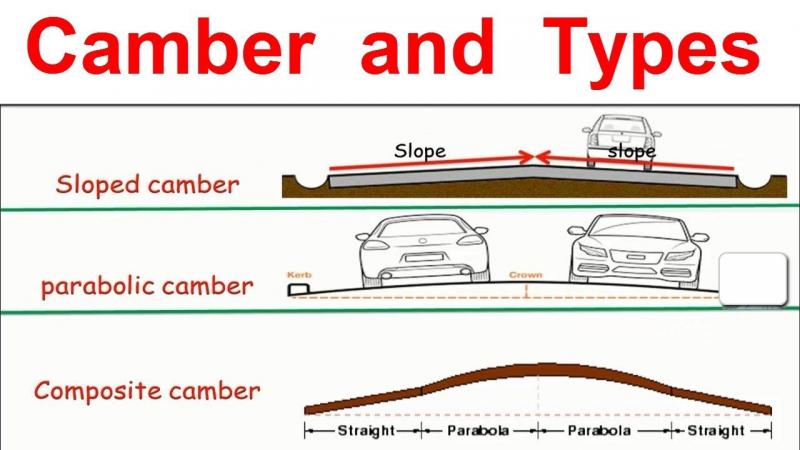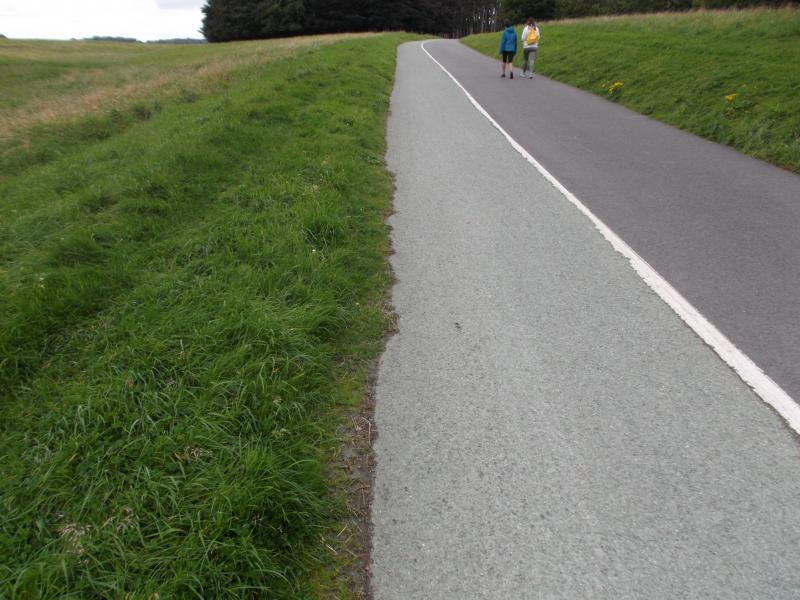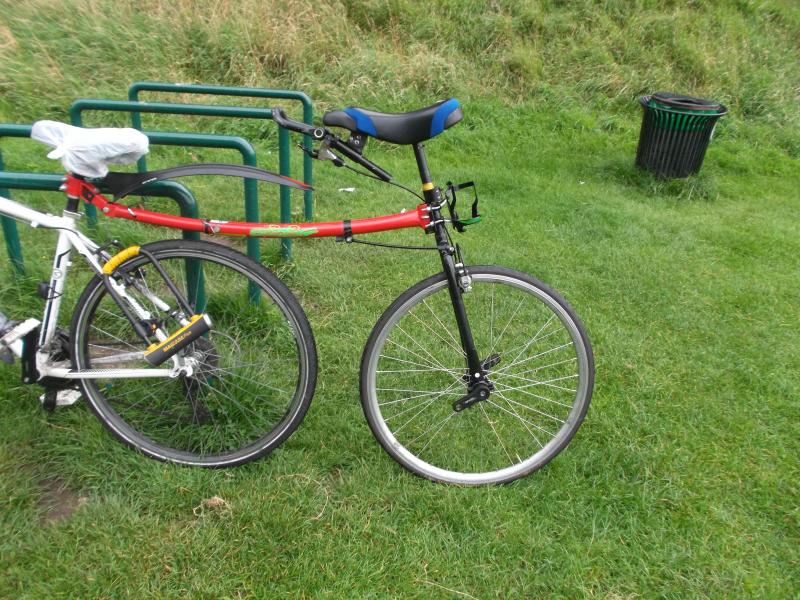Just a brief summary on the skinny wheel then. It works. I tried it on some steep camber and hardly noticed that I was riding on camber. I think skinny wheels are the future for road riding.
And what crank length are you currently using? Did you go to 75mm yet? Because on a 28" that is a gain ratio of 4.74, which is higher than my penny farthing (54" with 150mm cranks = 4.57) and hence should be exceptionally hard work with hills, I would imagine. Or does the light weight of the uni and tyre make it doable (the penny weighs 13.5kg)? I have also been running a plus size tyred 24" with 89mm cranks and that is hard enough, but I suppose that uni is relatively heavy in the grand scheme of things. Nonetheless 28" with 75mm seems like it would be too much for all but flat road.
@ ruari. I started out on 127mm cranks. I noticed that when I hit a bump I would weave off to one side. I think this was due to me over correcting on the very light and responsive wheel.
But the uni was behaving great on the camber. After doing some distance I went onto a 110 setting and the uni became much more stable over the bumps, The surface I was riding on was a bit rough.
The light weight and smooth tyre makes a big difference in performance and response to the riders efforts, better than I expected. Typically I ride a 36er with 165mm cranks and 24er with 3" tyre and 150mm cranks. But they are clumsy when compared to my skinny uni, they require a lot more effort.
I intend changing cranks until I reach the 75s. I don’t know about hills yet. I’ve only tried it on the flat. I don’t generally encounter hills on my road unicycling trips.
In future I might try it out on a hill each time I change cranks and try to draw a comparison between the skinny and the gearing on a bike. I’ll post my findings as I go.
@unibokk a 28" with the 127mm cranks you started with, have a gain ratio of 2.8. This is very comparable to your 36" w/165mm (2.77) but of course you have the big weight decrease, especially on the wheel. I can therefore imagine the 28" w/110mm cranks will start to feel noticeably different, at 3.23. However, once you get below 100mm, it is another level and will likely feel wildly different. A 28" w/89 is 3.99 and a 28" w/75 is 4.74! Have fun. 😉
Just back after doing some hill riding.
So, I set out this morning to do some hill testing on the ‘skinny’. Here’s what happened…
I started my ride on the camber trail which I rode on before, just to prove I wasn’t dreaming when I did the first camber test. And I was again impressed by the skinny’s performance.
Happy with that I decided to ride up a nearby hill. The hill is quite long with varying gradients. I did a short section of the hill before on my 36er with 165 cranks, so this gave me way to compare the performance of the skinny on hills with the 36er.
I had the skinny on 110 cranks and 80psi. Instead of doing just the short section I decided to ride up all of the hill. The skinny performed well and felt similar to the 36er in terms of effort but their was a stiff breeze which added to the level of difficulty.
When I got to the top of the hill I decided to have another go at it. This time I put more weight on the saddle( I’m still not fully adapted to the skinny). This made a difference. I was able to develop a smooth cadence and found it easier this time.
So my conclusion is that the skinny with 80 psi and 110 cranks can perform well on fairly steep hills (I don’t know the exact gradient)
My next challenge will be on 100mm and 89mm cranks with 100psi. Another advantage with the skinny is being able to put a high pressure tyre on it. The tyre I have on can take 120 psi. But I’ll be saving that for the 75mm cranks. 
I’ve just had another post flagged as spam. So I’ll leave this topic for now…
The Unibokk Sprint’
That’s what I’m calling it.
So, I set out this morning to do some hill testing on the ‘Sprint’ . Here’s what happened…
I started my ride on the cambered trail which I rode on before, just to prove I wasn’t dreaming when I did the first camber test. And I was again impressed by the Sprint’s performance.
Happy with that, I decided to ride up a nearby hill. The hill is quite long with varying gradients. I did a short section of the hill before on my 36er with 165 cranks, so this gave me a way to compare the performance of the Sprint on hills with the 36ers performance.
I had the Sprint on 110 cranks and 80psi. Instead of doing just the short section I decided to ride up all of the hill. The Sprint performed well and felt similar to the 36er in terms of effort but their was a stiff breeze which added to the level of difficulty.
When I got to the top of the hill I decided to have another go at it. This time I put more weight on the saddle ( I’m still not fully adapted to the Sprint). This made a difference. I was able to develop a smooth cadence and found it easier this time.
So my conclusion is that the Sprint with 80 psi and 110 cranks can perform well on fairly steep hills (I don’t know the exact gradients)
My next challenge will be on 100mm and 89mm cranks with 100psi. Another advantage with the narrow wheel, is being able to put a high pressure tyre on it. The tyre I have on can take 120 psi. But I’ll be saving that for the 75mm cranks.
I have to say that I really enjoyed riding uphill. My legs feel great. I usually only do flat on my 36er and downhill on my on my 24" Muni, so riding uphill is a novelty for me. I think after I’ve tested the shorter crank lengths that I will return to 110mm cranks so that I can include uphill riding in my routine.
Ruari is probably correct about riding up hills on cranks below 100mm, being too difficult, but I’ll give them a try anyway and see what happens.
I’m not saying you can’t do it, though I do wonder if it might be hard work but I guess that depends on the hills and your own fitness as much as ‘The Unibokk Sprint’. However, to be 100% clear, I am rooting for you and am very interested to hear the outcome. ðŸ˜
P.S. If you really want to go nuts Mad4One makes 60mm ISIS cranks and that would be a gain ratio of 5.93 on your 28" Sprint, which is higher than the top gear on one of my bikes (5.82)! 🤪
Thanks Ruari. I misinterpreted your post @#35. But I reckon my own limitations will see me struggling up that hill on cranks shorter than 100mm. I’m planning on trying out the 100mm cranks this weekend and will post my findings.
Two mark the double centenary of the Unibokk Sprint, I took it out for a sprint this morning. By double century I mean 100mm cranks and 100psi tyre pressure.
I rode the same route as the last day.
It was much more windy than the last day, Thursday, so I wondered if I could make it up the hill. The wind was a diagonal head wind and it was a real effort to ride up the hill. I was able to ride up the hill without stopping but it was a struggle. Without the extra 20psi I don’t think I could have done it.
Conclusion:- The performance of the 100x100 felt much like the 110cranks with 80psi but I prefer the 110 crank setting. Maybe if it hadn’t been so windy I might have enjoyed 100x100 more.
Tomorrow I hope to ride with 89mm cranks. The weather forecast for tomorrow suggests very calm conditions. I hadn’t planned on riding the hill on 89mm cranks but if the forecast proves correct then I might just give it a try.
Today the wind speed was as low as 6kph so I tried the 89ers on the hill and rode up that hill like a boss. 


What does “camber” mean? We don’t use that word in the US and reading through this thread it seems to have a few different meanings. The UK Cambridge Dictionary (I was looking for a non-US definition) says: “a gradual slope down from the middle of a road to each edge, designed to make water to flow off it”. Does that just mean a paved road, rather than gravel or dirt? Or does it have something to do with the material? I assume it’s what we call “blacktop” here but blacktop can be really smooth or really rough, depending on its age. Thanks.
Like your dictionary indicates, it’s about the curved surface of a (usually) paved road. As we don’t ride in the center, when riding along a roadway we are usually on an angled surface. Some tires (and riders) handle this quite well, but others struggle with it. And some roads have much steeper camber than others. Tire shape (cross section) and tire pressure can also affect how a tire handles camber. So it’s generally a factor for anyone that rides on paved roads
Unpaved roads also usually have camber, but the roughness of the surface seems to “mask” the effect compared to on smooth pavement. But paving material mostly isn’t a factor, at least between concrete and asphalt. Bricks can be another story though…
I mostly do Road riding on a bike path, which is mostly away from roads. But it is also a paved roadway, and needs to drain water as well. The difference is that usually the whole thing tilts to one side or the other. But because they are much narrower than roads for motor vehicles, they don’t need as much tilt. But I can still feel it as I’m riding…
Yes, we do you use the word camber in the US, at least as an engineer. The effect of camber on a unicycle depends on the type tire, the slope of camber and the amount of friction between the road and tire. Surfaces with lower friction like wet or icy payment have less effect.
@Jim T
I think that another factor in the camber crises is the wheel twitch. With each pedal stroke the wheel twitches and as it does it ricochets off the camber pushing the unicycle off to one side. This ricochet effect is exaggerated by the softer / larger volume tyre as it compresses and recovers it’s original profile with every pedal rotation.
So less tyre contact should reduce the ricochet effect. Shorter cranks should help reduce the twitch.
I agree with John’s point about the cross section and tyre pressure being a factor. I’m using a very smooth tyre with 100 psi to reduce friction. It has an almost oval shaped cross section which means that most of the tyre surface is elevated off the road, reducing friction even further.
What do you reckon Jim? Am I making any sense here?
I agree, I have found that higher pressures decreases the camber effect. As in this video, https://www.youtube.com/watch?v=1MPSdfdA1mU
I don’t know about wheel twitch. It would seem to cancel out with the right and left side unless the rider pushed harder on one side then the other. Based on what I can logically justify I believe that the camber effect on unicycles is cased by the difference in the circumference of the tire between the center and to each side of the center. On a level surface where the tire is perpendicular the the surface the differences in the circumference cancel out. When the tire is not perpendicular to the surface the tire is essentially a Truncated Cone shape and that causes the wheel to turn uphill.
At last! The 75mm crank hill test 
So I set out this morning to test the 75mm cranks on the Unibokk Sprint. Here’s what happened…
I returned to the same hill as the previous tests. At first I found it difficult to push off, not just because of the big gear but also because of the very short pedal strokes. I have been riding my 36er with165mm cranks since the last time I rode the Sprint so I was still in long crank mode.
Anyhow once I got going it felt good. As with the previous tests I made better progress up the hill on each attempt. But when I got half way up the hill until I came to a halt.
At this point the gradient suddenly gets much steeper and also i suddenly became exposed to a breeze which was blowing through a gap in the trees.
I could not overcome this so after a few attempts I called it a day.
Had there been no breeze I may have been able to zig zag my way to the top. I might try again some day.
Overall I was happy with the test. I got further up the hill on the 75mm cranks than I expected.
Conclusion :- The lightness of the skinny wheel combined with the high pressure smooth tyre make the 700 wheel very suited to 75mm cranks.
I remember Gizmo Duck suggesting that a person could ride all day on a similar a setup. I haven’t done any long rides on it yet but I do notice how fresh I feel even after riding it on the hill.
Pic 1. shows the steeper part of the hill. The hill is .57 miles long. The gradient gets steeper at .28 miles.
Pic 2 shows the 75mm cranks before I attached the pedals.
I’ve just had a long post about my test on the ‘Unibokk Sprint’ with 75mm cranks, blocked as spam. So I’ll leave it at that.
That is weird as I was able to read it this morning and see the nice trailer bar for transporting the unicycle behind the bike ![]()


